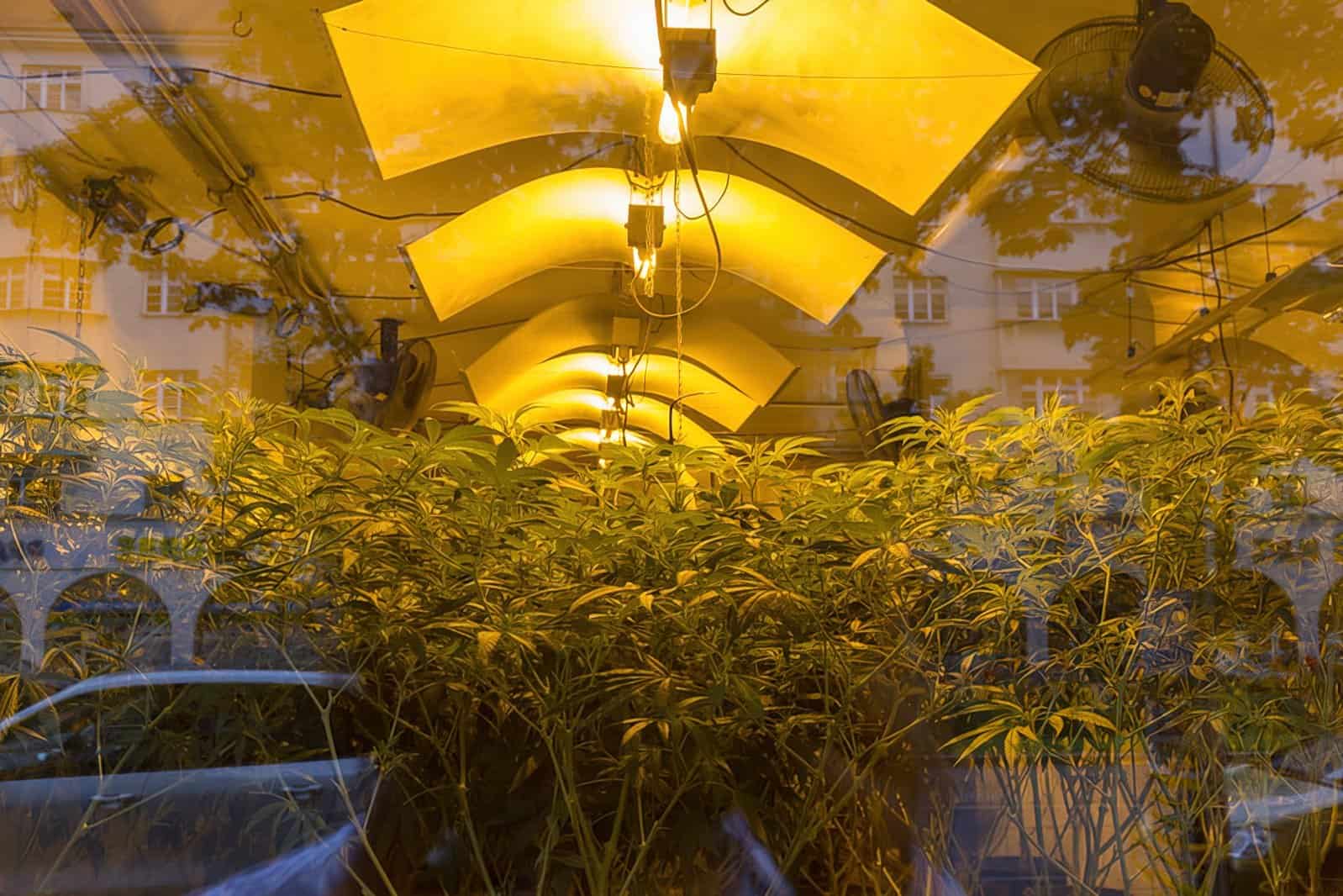Cannabis plants love light. Of all the growth factors that you can manipulate in your grow, lighting conditions affect the yield and the quality of the final product the most.
When grown outdoors, place your weed patch in the sunniest part of your garden. (Unless you live in a desert region. In this case, you may need to protect your cannabis from full sun in the afternoon using shade cloth or making sure there’s a shade cast by trees, buildings, or other structures.)
In an indoor setup, a grower has the ability to control the following aspects of lighting:
- photoperiod (the ratio between the hours of light and darkness),
- light intensity,
- spectrum.
Any of these three aspects of lighting conditions affect your cannabis grow, so let’s look at each of them in more detail.
Photoperiod
The classic short-day varieties of cannabis will remain in the vegetative phase indefinitely if days are longer than 14 hours and 40 minutes. In most commercial grow-ops, timers are set to 18/6 (18 hours of light and 6 hours of darkness) although people experiment with longer light schedules (most often, 20/4 and 24/0), especially with younger seedlings and clones.
For the flowering stage, the standard light cycle is 12/12. Some gardeners shorten the days even further—to 11/13—saying that this can increase the expression of sativa characteristics in a hybrid and create other interesting effects. However, the difference, if any, is small, and the whole subject remains controversial.
Cutting-edge autoflowering strains, such as those produced by FastBuds, don’t depend on the ratio between days and nights and can be grown from seed to harvest using the same light schedule. With autoflowers, the more light hours you give your plants, the bigger and more productive they get.
Light Intensity
Many types of bulbs that seem bright to the human eye are not suitable for the cultivation of plants. Only very intense lights can be used for cannabis growing. Most often, people install high intensity discharge (HID) lamps and LEDs.
If you choose an HID light—either metal halide (MH) or high-pressure sodium (HPS)—the requirements are about 50W per square foot (or 30-80 W/sq.foot). Please note that the amount of light that a weed plant needs steadily increases within this range throughout the life cycle. Budding plants may require twice as much energy than vegging ones.
Another trick with manipulating light intensity is making sure that every plant top in the garden is at an equal distance from the light. To achieve this, different training (canopy management) techniques are used.
Spectrum
Research has shown how important the right spectrum is for the plant structure, the expected dry weight, and the cannabinoid content in the end product.
Thus, HPS bulbs—with their low red light:far red light (R:FR) ratio—lead to stretchier plants with longer internodes, while modern LED quantum boards have a more natural spectrum and produce shorter and more compact phenotypes.
With HPS, you may also count on higher yields of dry flowers than when using LEDs. On the other hand, the production of THC, CBD, and other cannabinoids will be significantly lower with HPS because of low levels of blue light in their spectrum. To offset this, you may use such supplementary lighting as MH or 6400K CFLs.
Interestingly, while the overall synthesis of cannabinoids, including THC, is lower with HPS, the percentage of THC in the whole weight of cannabinoids will be significantly higher than in buds grown under LEDs. Since not just THC, but every other cannabinoid, plays its unique part in how marijuana affects the user, the relative predominance of THC may lead to blander, less nuanced high.
Final Thoughts
To achieve best possible results, a cannabis grower should provide their garden with plenty of light keeping in mind the correct photoperiod for a specific cultivar and paying extra attention to the optimal light spectrum.
Source: https://2fast4buds.com/

